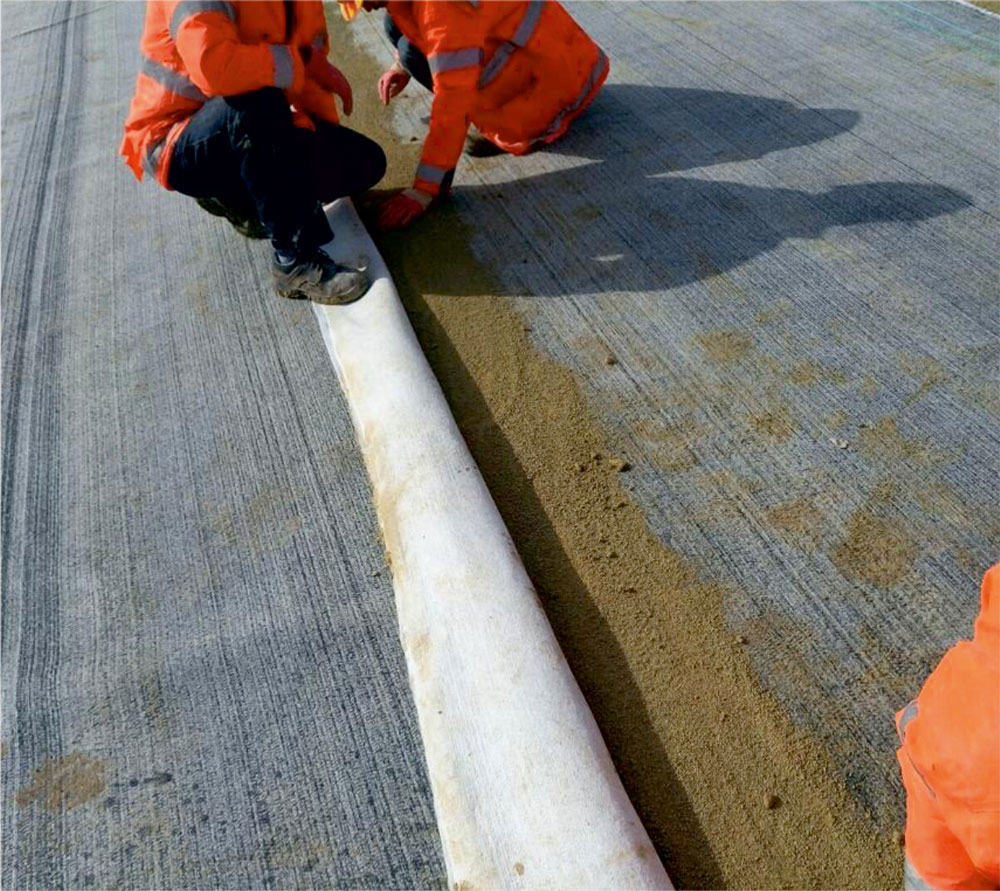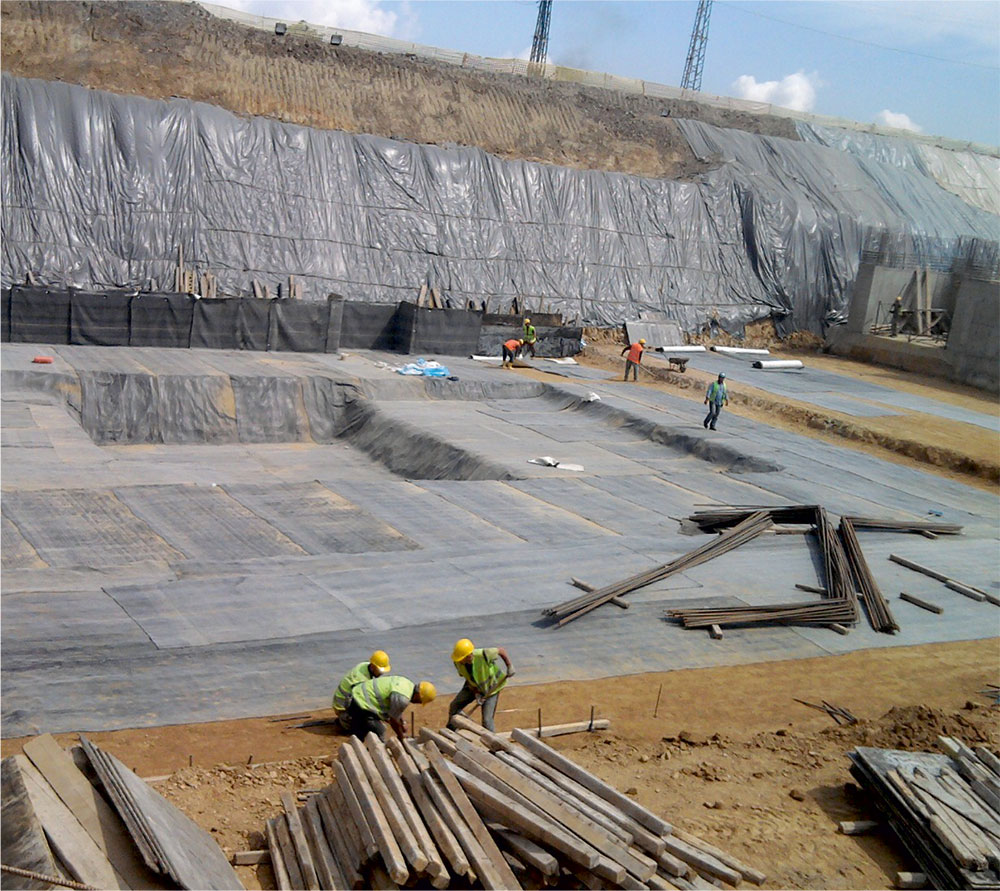Geosynthetic Clay LinerGeosynthetic Clay Liner is an impermeable material created by wrapping natural sodium bentonite material with durable geotextiles. An impermeable gel is formed as a result of the contact of the bentonite, which is trapped by the self-enclosing geotextiles, with water. In this process, natural bentonite dry network
In this process, natural bentonite expands approximately 16 to 18 times its dry weight and forms an impermeable layer. When water is removed from the environment, it returns to its previous state. This cycle is repeated constantly and does not affect the waterproofing properties of the material.
Application and Usage Areas
Geosynthetic Clay Liner is applied with a thickness of at least 10 cm on a compressed soil or gravel layer, and at least 30 cm under a soil or gravel layer under a concrete or reinforced concrete layer.
It should be applied on flat, gap-free and dry surfaces.
It is applied by rolling on the surface in flat areas or by overlapping the joints by at least 30 cm with the help of a work machine.
Roll joints are laid by staggering them by at least 30 cm.
On vertical surfaces, it must be fixed mechanically.
• Solid waste storage areas
• Mine waste storage areas
• Irrigation, fire and golf course ponds
• Irrigation channels
• Water reservoirs
• Building foundation insulation projects


- It provides a great cost advantage compared to the application of compressed clay layer.
- Compared to the clay layer with the same impermeability, it performs its impermeability function better with 100-150 times less volume.
- It provides significant savings in costs such as storage and transportation.
- It has superior hydraulic and mechanical properties thanks to natural bentonite and the woven and non-woven geotextiles surrounding it.
- There is no need for special equipment for laying the rolls.
- It is much easier and faster to transport and apply compared to the compressed clay layer, which creates much more volume.
The materials are shipped in rolls of 4 – 5 m width and 40 – 50 m length.
It should be stored in a warehouse with a flat, dry surface and good drainage, and the products should be covered with a tarpaulin.
It should be protected from contact with moisture and water during storage.

